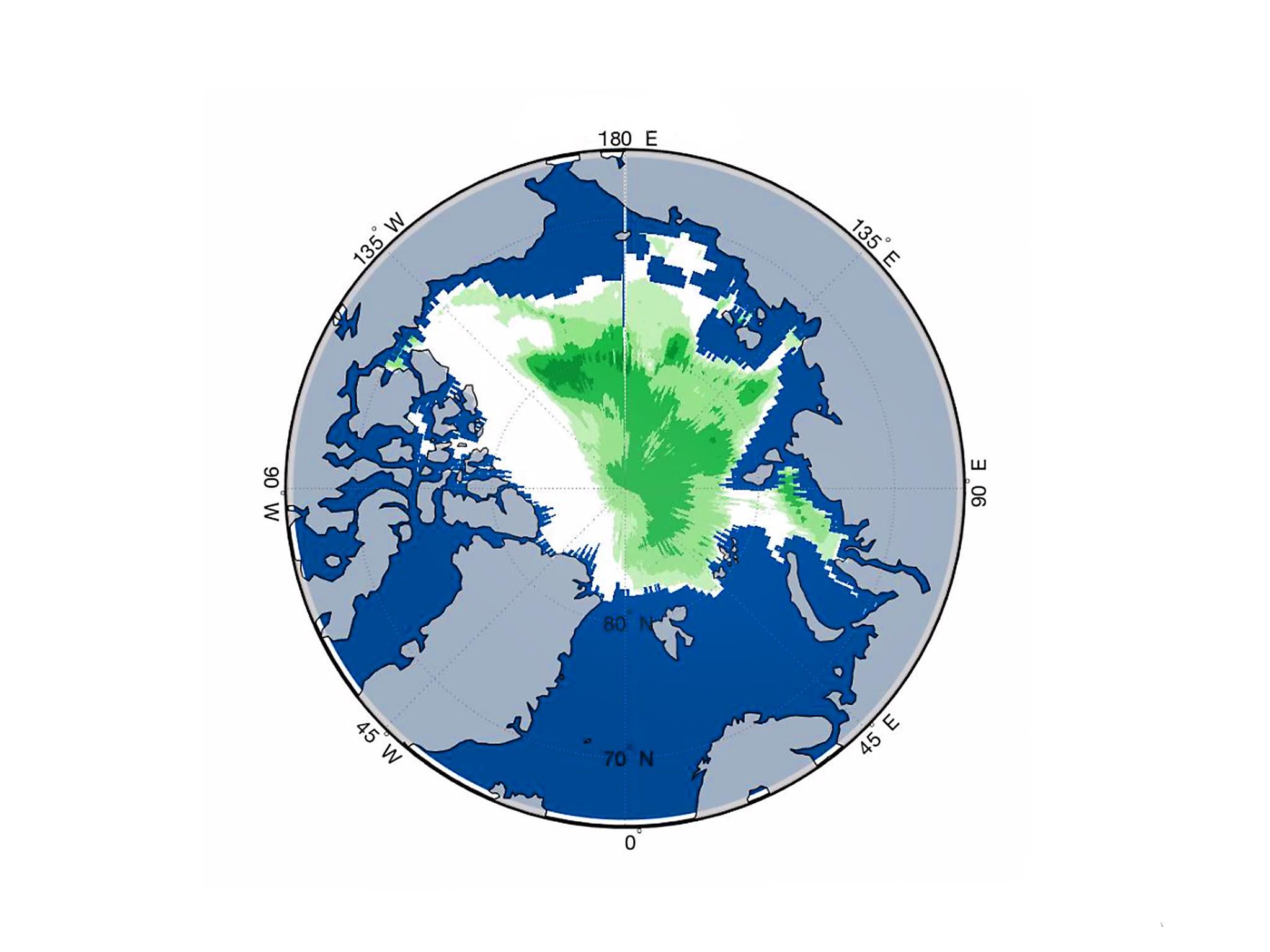Arctic turns green as sea ice melts to record low levels
'All of a sudden, our entire idea about how this ecosystem works is different'

The pristine white of the Arctic is turning green because massive blooms of plankton can grow beneath the thinning sheets of sea ice, according to a new study.
The phenomenon was first noticed in 2011 and was something of a surprise as it had been believed that the water beneath the ice was far too dark for plants to photosynthesize.
But now researchers have established the reason the plankton can flourish in such a usually alien environment is that rising temperatures have melted the ice to the point where light can pass through.
After developing a mathematical model, they concluded about 30 per cent of the Arctic sea ice is thin enough for this to happen, compared to just three to four per cent only 20 years ago, they reported in the journal Science Advances.
In addition to the thinning of the ice, large pools of water have been forming on the surface, which help the sunlight get through the normally impenetrable ice.
Sea ice has been at record low levels for much of this year with 14.1 million square kilometres on 28 March, compared to the average between 1981 and 2010 of 15.4 million at the same time of year.
The Arctic has seen astonishing rises in temperatures over the last few decades with Spitsbergen experiencing winters of up to 11 degrees Celsius warmer than the average between 1961 and 1990.
One of the researchers, Dr Chris Horvat, of Harvard University, said: “Our big question was how much sunlight gets transmitted through the sea ice, both as a function of thickness, which has been decreasing, and the melt pond percentage, which has been increasing.
“What we found was that we went from a state where there wasn’t any potential for plankton blooms to massive regions of the Arctic being susceptible to these types of growth.”
The thickness of sea ice in the Arctic has reduced by an average of about a metre in the past 30 years.
And Dr Horvat said this had “dramatically changed the ecology in that area”.
“All of a sudden, our entire idea about how this ecosystem works is different,” he said.
10 photographs to show to anyone who doesn't believe in climate change
Show all 10“The foundation of the Arctic food web is now growing at a different time and in places that are less accessible to animals that need oxygen.”
The blooms of plankton form the basis of the food web in the region.
Sea ice retreats and advances as summer turns to winter and normally the plankton will bloom in the open water, rather than under the ice. This attracts fish and also their predators.
The researchers said they hoped their model would help any future expeditions to the region to explore the effect of the changes on the Arctic ecosystem.
Subscribe to Independent Premium to bookmark this article
Want to bookmark your favourite articles and stories to read or reference later? Start your Independent Premium subscription today.

Join our commenting forum
Join thought-provoking conversations, follow other Independent readers and see their replies